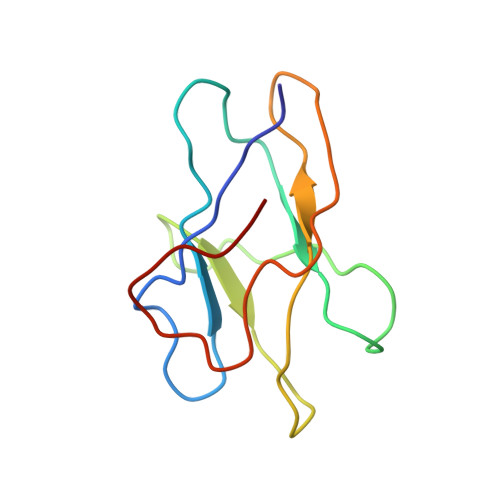An Immunoglobulin-Like Fold in a Major Plant Allergen: The Solution Structure of Phl P 2 from Timothy Grass Pollen.
De Marino, S., Morelli, M.A., Fraternali, F., Tamborino, E., Vrtala, S., Dolocek, C., Arosio, P., Valenta, R., Pastore, A.(1999) Structure 7: 943-952
- PubMed: 10467147
- DOI: https://doi.org/10.1016/s0969-2126(99)80121-x
- Primary Citation of Related Structures:
1BMW - PubMed Abstract:
Grass pollen allergens are the most important and widespread elicitors of pollen allergy. One of the major plant allergens which millions of people worldwide are sensitized to is Phl p 2, a small protein from timothy grass pollen. Phl p 2 is representative of the large family of cross-reacting plant allergens classified as group 2/3. Recombinant Phl p 2 has been demonstrated by immunological cross-reactivity studies to be immunologically equivalent to the natural protein. We have solved the solution structure of recombinant Phl p 2 by means of nuclear magnetic resonance techniques. The three-dimensional structure of Phl p 2 consists of an all-beta fold with nine antiparallel beta strands that form a beta sandwich. The topology is that of an immunoglobulin-like fold with the addition of a C-terminal strand, as found in the C2 domain superfamily. Lack of functional and sequence similarity with these two families, however, suggests an independent evolution of Phl p 2 and other homologous plant allergens. Because of the high homology with other plant allergens of groups 1 and 2/3, the structure of Phl p 2 can be used to rationalize some of the immunological properties of the whole family. On the basis of the structure, we suggest possible sites of interaction with IgE antibodies. Knowledge of the Phl p 2 structure may assist the rational structure-based design of synthetic vaccines against grass pollen allergy.
- NIMR, Mill Hill, London, UK.
Organizational Affiliation:
















